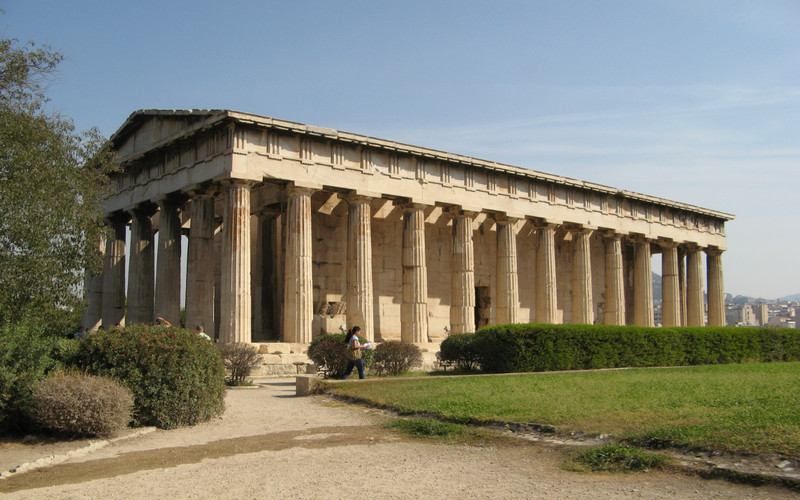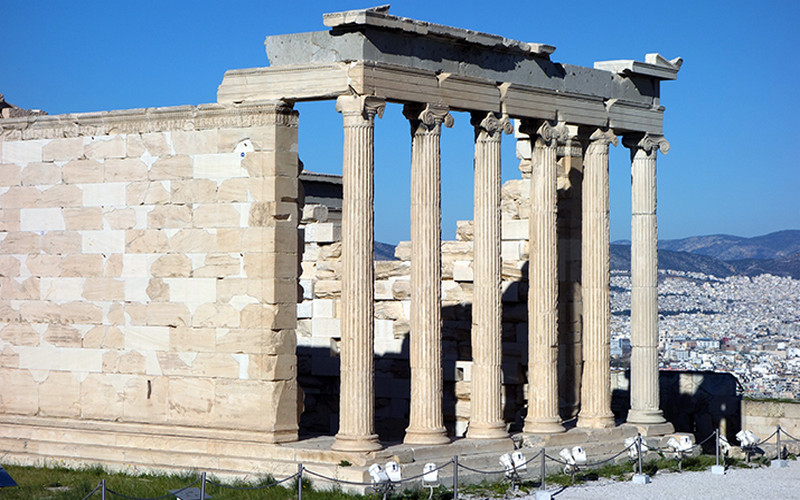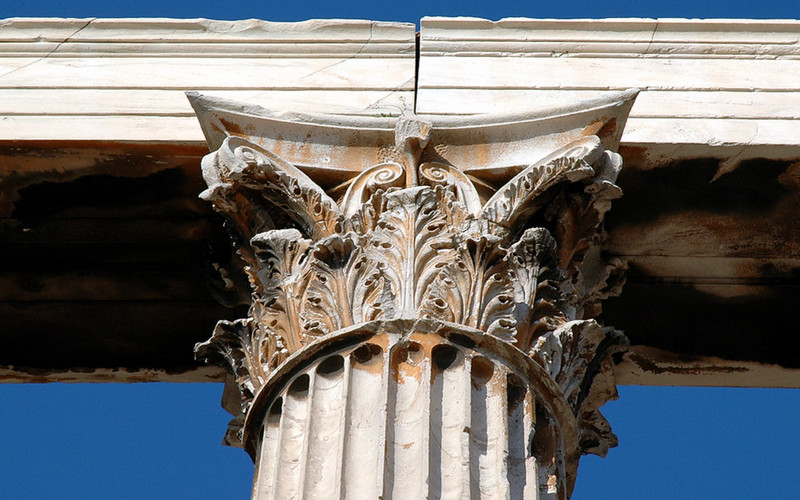Temples were the most important public buildings in ancient Greece, largely because religion was a central part of everyday life. Often placed in prominent positions, temples were also statements about political and divine power. The earliest temples, in the 8th century BC, were built of wood and sun-dried bricks. Many of their features were copied in marble buildings from the 6th century onwards.
THE DEVELOPMENT OF TEMPLE ARCHITECTURE
The Greek temple architecture is divided into three styles, which evolved chronologically and are most easily distinguished by the column capitals.
Doric temples were surrounded by sturdy columns with plain capitals and no bases. As the earliest style of stone buildings, they recall wooden prototypes.

Ionic temples differed from Doric, in their tendency to have more columns, of a different form. The capital has a pair of volutes, like ram’s horns, front and back.

Corinthian temples in Greece were built under the Romans and only in Athens. They feature columns with slender shafts and elaborate capitals decorated with acanthus leaves.






